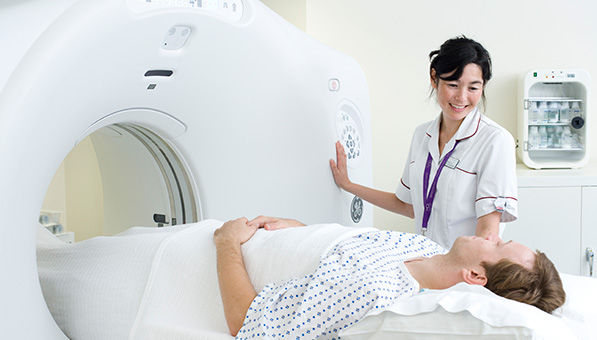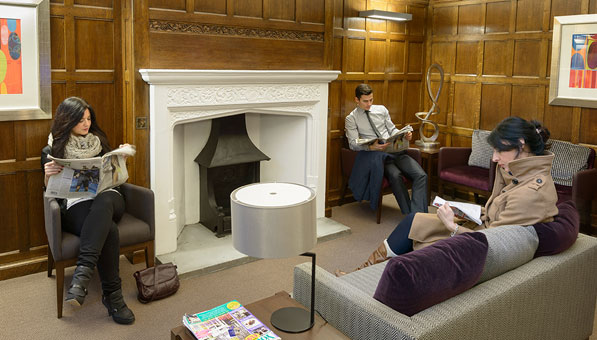Hyperhidrosis
Effective treatment of hyperhidrosis for excessive sweating
- Clinically proven and effective treatments for hyperhidrosis
- Treatments tailored to your needs by experienced specialists
- Quick and accurate diagnoses and immediate treatment available
What is Hyperhidrosis?
Hyperhidrosis is excessive sweating. It can cause distress because the body sweats even when it does not need to cool down, and we recognise that it can be embarrassing to be constantly sweating and that the more distressed you become, the worse the condition can get. The sweating can be localised or may occur in several areas across the body, including the face, underarms, back and palms of the hands or soles of the feet.
Hyperhidrosis can be triggered by a specific cause, such as anxiety or eating spicy food, or it can occur without any obvious reason. Localised symmetrical hyperhidrosis (primary hyperhidrosis) is the most common form of the condition. It affects specific areas of the body, such as the palms or underarms, and affects both sides of the body simultaneously, with symptoms usually presenting themselves in adolescence or childhood. Generalised hyperhidrosis (secondary hyperhidrosis) affects the entire body at once and can be triggered by illnesses or hormonal conditions, including diabetes and the menopause.
While the causes of hyperhidrosis are not well known, we do know how to treat it. You may have been told that there is no treatment, but we can help to reduce your symptoms and the distress you may be feeling.
Enquire about
Hyperhidrosis
Treating Hyperhidrosis
If you think you are suffering from hyperhidrosis, we can provide a diagnosis and treatments which will help to reduce your symptoms. Our Consultants are highly experienced and respected dermatologists with an extensive history of successfully treating patients with hyperhidrosis.
What to expect from your Hyperhidrosis consultation
All consultations take place at our private London clinic and all patients are seen by one of our qualified dermatologists. Your first consultation includes a thorough assessment of your condition, followed by a recommended treatment plan.
- We will take a full medical history and discuss the problem with you, including your specific symptoms and anything you may have tried in the past to manage it. If you are diagnosed with hyperhidrosis, several treatments can make a huge difference.
- We will recommend the best treatments for your condition, basing our advice on your situation, with the aim of reducing your symptoms and making the excessive sweating easier to manage.
- We will keep you informed of all costs, options and available alternatives, so you are fully in control of your diagnosis and your treatment.
Recommended Hyperhidrosis Treatments
There are several options when it comes to treating hyperhidrosis, and your specific treatment plan will depend largely on the nature of your condition. Our treatments focus on not only alleviating the symptoms but also tackling the condition on a long-term basis.
Self-help for hyperhidrosis
To help manage hyperhidrosis, the first agents to try are topical products that can help to absorb the excess sweat, such as talcum powder and cornstarch powder (e.g. Zeasorb®). These are usually only helpful in mild cases.
Stronger antiperspirants containing aluminium chloride e.g. Driclor ® and AnHydrolForte® can be used for armpits, hands and feet. They are applied 2-3 times a week at night and washed off in the morning to avoid damage to clothes. Application can be effective, especially for underarm sweating, but they can cause the skin to become irritated over time. If this happens you should consult your doctor.
Botox™ Injections
Botox™ Injections provide an effective treatment for hyperhidrosis in many people.
Treatment involves injecting small doses of Botox™ into the skin of the affected areas. It works by blocking the action of nerves that supply the eccrine (sweat) glands. This stops the glands from producing sweat.
The effects of Botox™ treatment can last for several months by blocking the nerve endings and, as new nerve endings start to form, a repeat treatment is usually required.
What does the treatment involve?
You will need a number of small injections with a fine needle into the affected area. The injections may cause some discomfort and your skin may be slightly red and inflamed immediately after treatment. This normally resolves within a few hours.
Are there any side effects?
Side effects include bruising or tenderness at the injection sites and increased sweating at other sites. Rare side effects include itching, muscle aches, allergic reactions and muscle weakness.
How long does it take to work?
Most patients notice some positive changes within the first week after treatment. The effects usually last between 4-7 months.
Systemic treatments
Anticholinergic drugs such as Robinul® (Glycopyrrolate) can inhibit sweating. They may be useful for patients with hyperhidrosis at multiple sites. Patients commonly experience side effects such as dry eyes and mouth and occasional blurred vision.
Iontophoresis
Iontophoresis involves immersing the parts of your body where the worst of your hyperhidrosis symptoms occur in warm water. A mild electric current is then passed through the immersion fluid. Some clinicians add glycopyrrhonium bromide to enhance the effects.
Because your body’s natural electrical charge is negative, positive ions in the water induced by the current flow straight through the sweat ducts, interrupting the sweating process by an unknown mechanism.
Iontophoresis has been in clinical use for several decades and is not dangerous. Few people report discomfort, apart from some tingling, and sometimes a dry mouth.
To become effective, iontophoresis is usually delivered in multiple treatment sessions and maintenance sessions are necessary to help manage your hyperhidrosis.
Surgery for hyperhidrosis
Surgical procedures may be considered when other methods have been tried first. Two types of surgery are available:
Subcutaneous sweat gland curettage
Over-active sweat glands are removed under general anaesthetic. The procedure can reduce sweating by up to 50% in many cases.
Transthoracic sympathectomy
This involves cutting the nerves that supply the sweat glands. If necessary, the surgeon performs partial removal of the involved nerve fibres and ganglia in the spine (T2 and T3) under general anaesthetic. This eliminates excessive sweating in the hands and underarms and is permanent. It is an effective treatment for severe hyperhidrosis on the palms and under the arms but there is between 40-69% risk of compensatory hyperhidrosis in which new areas of excessive sweating develop, usually on the trunk and lower parts of the body).
Frequently Asked Questions Hyperhidrosis Treatment
Your treatment will depend on what kind of hyperhidrosis you have and where on your body it most affects you. You may be able to manage the condition yourself by reducing your stress levels, avoiding certain foods, and using skin products that help absorb excess sweat, and antiperspirants which you can use on your hands, feet, armpits, and hairline. Iontophoresis involves immersing affected parts of your body in warm water, while a mild electric current interrupts the sweating process. Other treatments include Botox™ injections to the sweat glands, prescription medicine, and in some cases, surgery to remove sweat glands.
While it’s normal to sweat if you’re hot or exercising, hyperhidrosis is when you sweat excessively. It’s a common condition, which can affect your whole body or just a few areas. Hyperhidrosis can happen without an apparent cause, or it can be triggered by something else, such as anxiety or eating particular foods. It can sometimes be related to another medical condition, such as heart disease, or it can be a side-effect of medication. Hyperhidrosis can be distressing and embarrassing because your body sweats even when it doesn’t need to cool down. Sometimes, the more self-conscious you become, the worse the condition becomes.
Up to half of people with primary focal hyperhidrosis (mainly affecting the hands, feet, face, head, and armpits) have a family history of the condition. With secondary generalised hyperhidrosis, it’s usually related to illness or a hormonal condition such as diabetes or the menopause, or it can be a side-effect of certain medications.
If excessive sweating mainly affects your hands, feet, face, head and under your arms, it’s known as primary focal hyperhidrosis, which usually starts in childhood. If your hyperhidrosis is caused by medication or is related to a medical condition, it’s known as secondary generalised hyperhidrosis.
Your doctor will examine you to check for your most affected areas. They’ll also ask whether you have any other health problems, are on medication, and whether there’s a family history of the condition. You might also have a ‘sweat test’, which involves putting powder on the affected skin that changes colour when wet.
Although losing weight won’t cure your hyperhidrosis, it may mean you sweat less when you are active.
If you have mild hyperhidrosis, you may be able to manage your symptoms through lifestyle changes such as wearing loose clothing, using antiperspirants, managing anxiety, and avoiding spicy foods. Skin products such as talcum powder and cornstarch powder can help absorb excess sweat.
Most hyperhidrosis treatments are not permanent. For example, Botox™ injections to the armpits last 4-7 months, and you’ll need maintenance sessions of iontophoresis treatment. Surgery can provide a more permanent solution, in many cases reducing sweating by up to 50% in the treated areas. However, depending on the type of surgery, new areas of excessive sweating may develop over time.
Why use the Devonshire Clinic?
If you sweat excessively, you do not need to keep suffering. Our experts can treat your hyperhidrosis by providing medical therapies that are proven to help reduce the symptoms of excessive sweating.
Our personalised approach means that you’ll get the treatment that reflects your specific requirements. We focus on long-term solutions, advocating not only better physical health, but also improving the negative psychological effect that hyperhidrosis can have. Contact our team today to book an initial consultation.


